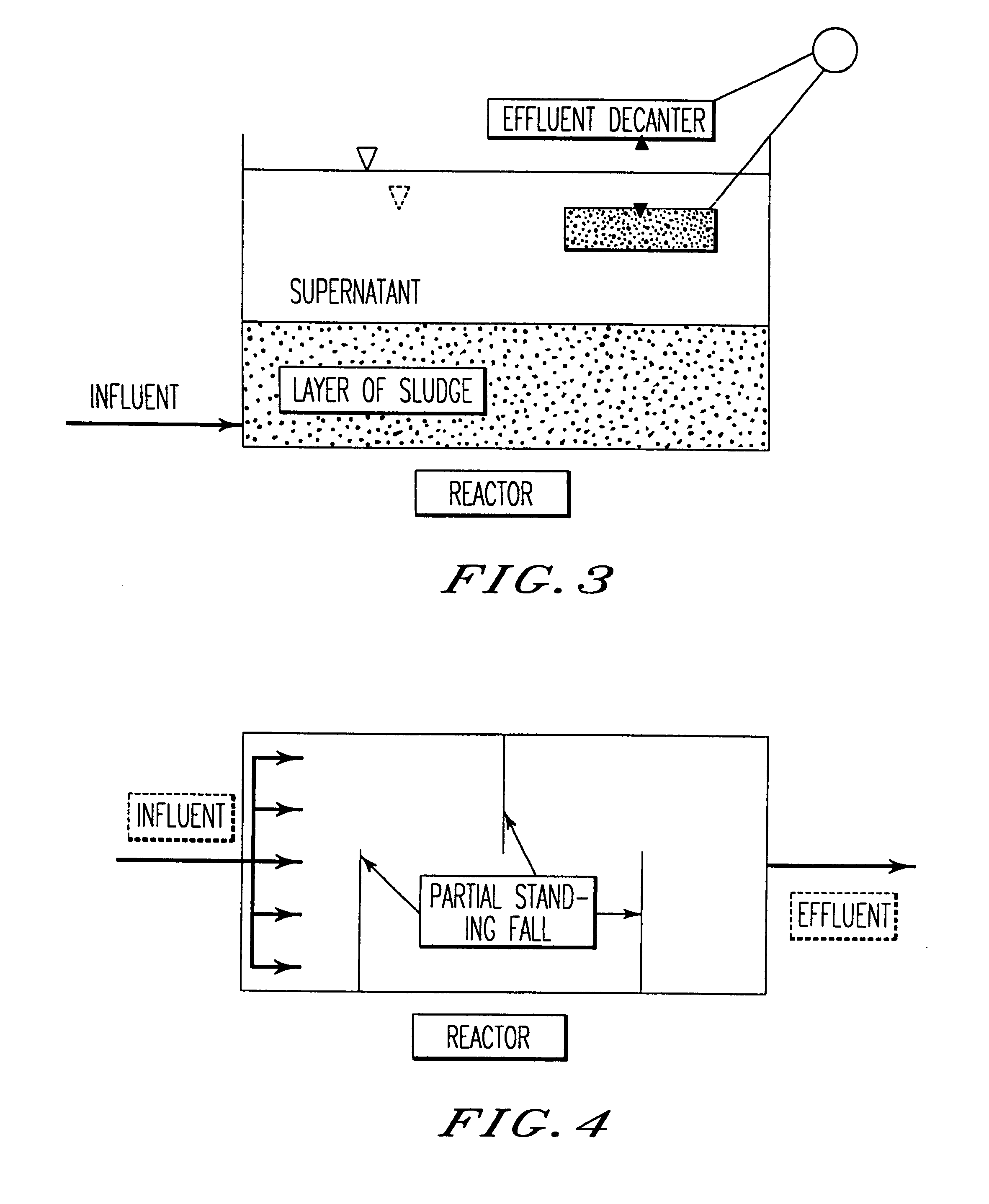Process for wastewater treatment using intermittently decanted extended aeration process
a wastewater treatment and extended aeration technology, applied in biological water/sewage treatment, multi-stage water/sewage treatment, sustainable biological treatment, etc., can solve the problems of difficult to provide clean water resources and preserve ecological systems, nitrogen and phosphorus are not efficiently removed and discharged together with wastewater, and it is difficult to provide high-quality water resources
- Summary
- Abstract
- Description
- Claims
- Application Information
AI Technical Summary
Problems solved by technology
Method used
Image
Examples
example 1
An actual wastewater obtained from the KIST residents' apartment (Seoul, Korea) was used for the experiment. The properties of the wastewater as used are described in the following Table 3. Particularly, this wastewater contains low concentration of carbon source as shown in Table 3.
A reactor having 17 L of maximal working volume with circular bottom having diameter of 20 cm was seeded with a grab sample obtained from aerobic basin of the Kwangdongli Sewage Treatment Plant (Kwanju-Goon, Kyungi-Do, Korea), and then said wastewater was fed thereto. Cyclic operation of the reactor was controlled by a Master-K30H programmable logic controller (PLC, LG Electronics, Korea).
10 L of influent wastewater was fed to the reactor everyday and aeration period was set at 48 min., settling period at 72 min., and decanting period at 24 min, respectively; the duration of each cycle was 144 min (2.4 hr) i.e. 10 cycles per day.
To control the sludge retention time, active sludge was washed during the la...
example 2
The same reactor as in Example 1 was used in this example. The operation conditions were exactly the same as in Example 1, except that 48 min. of aeration period was divided into the 15 min. of first aeration phase (FAP), and the subsequent 33 min of the second aeration phase (SAP), and methanol was added during FAP and acetate ws added to the reactor during the last 24 min. of the settling period and the whole decanting period.
The amount of methanol added was 200 mg / L and that of acetate ws 300 mg / L as calculated in terms of COD based on the total wastewater.
The results of wastewater treatment are set forth in Table 3.
As shown in the above results, in the treatment of domestic wastewater not having sufficient carbon source, total nitrogen and total phosphorus removed much more efficiently in Example 2 than in Example 1.
PUM
| Property | Measurement | Unit |
|---|---|---|
| chemical oxygen demand | aaaaa | aaaaa |
| chemical oxygen demand | aaaaa | aaaaa |
| concentration | aaaaa | aaaaa |
Abstract
Description
Claims
Application Information
 Login to View More
Login to View More - R&D
- Intellectual Property
- Life Sciences
- Materials
- Tech Scout
- Unparalleled Data Quality
- Higher Quality Content
- 60% Fewer Hallucinations
Browse by: Latest US Patents, China's latest patents, Technical Efficacy Thesaurus, Application Domain, Technology Topic, Popular Technical Reports.
© 2025 PatSnap. All rights reserved.Legal|Privacy policy|Modern Slavery Act Transparency Statement|Sitemap|About US| Contact US: help@patsnap.com



